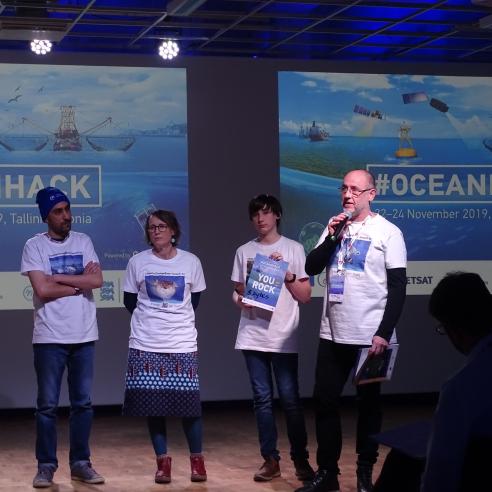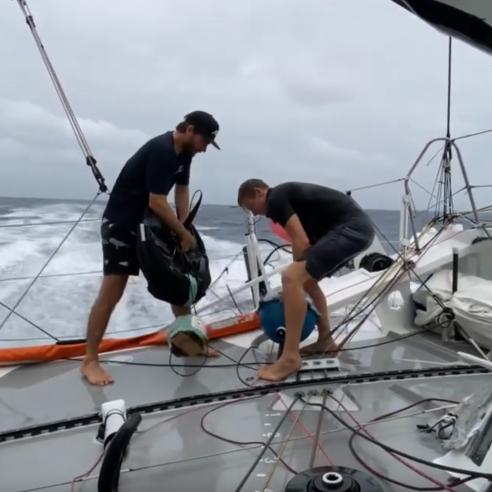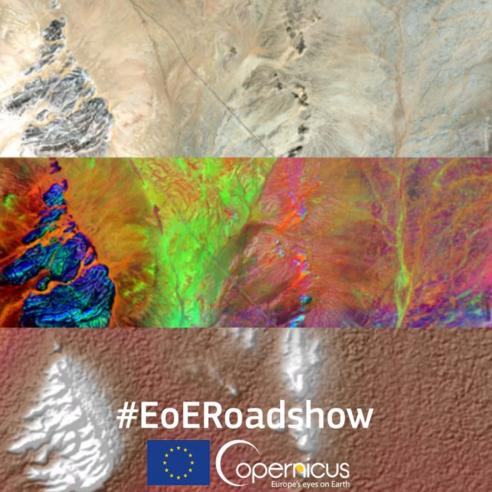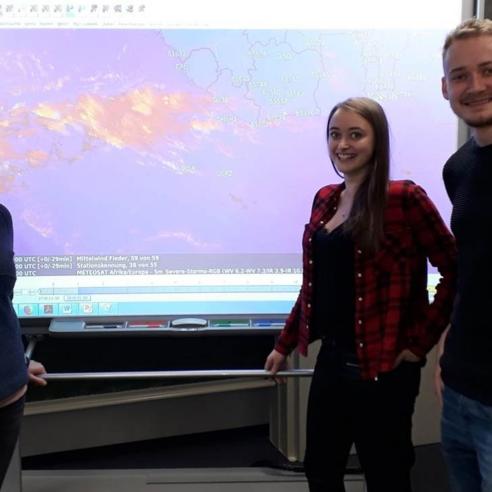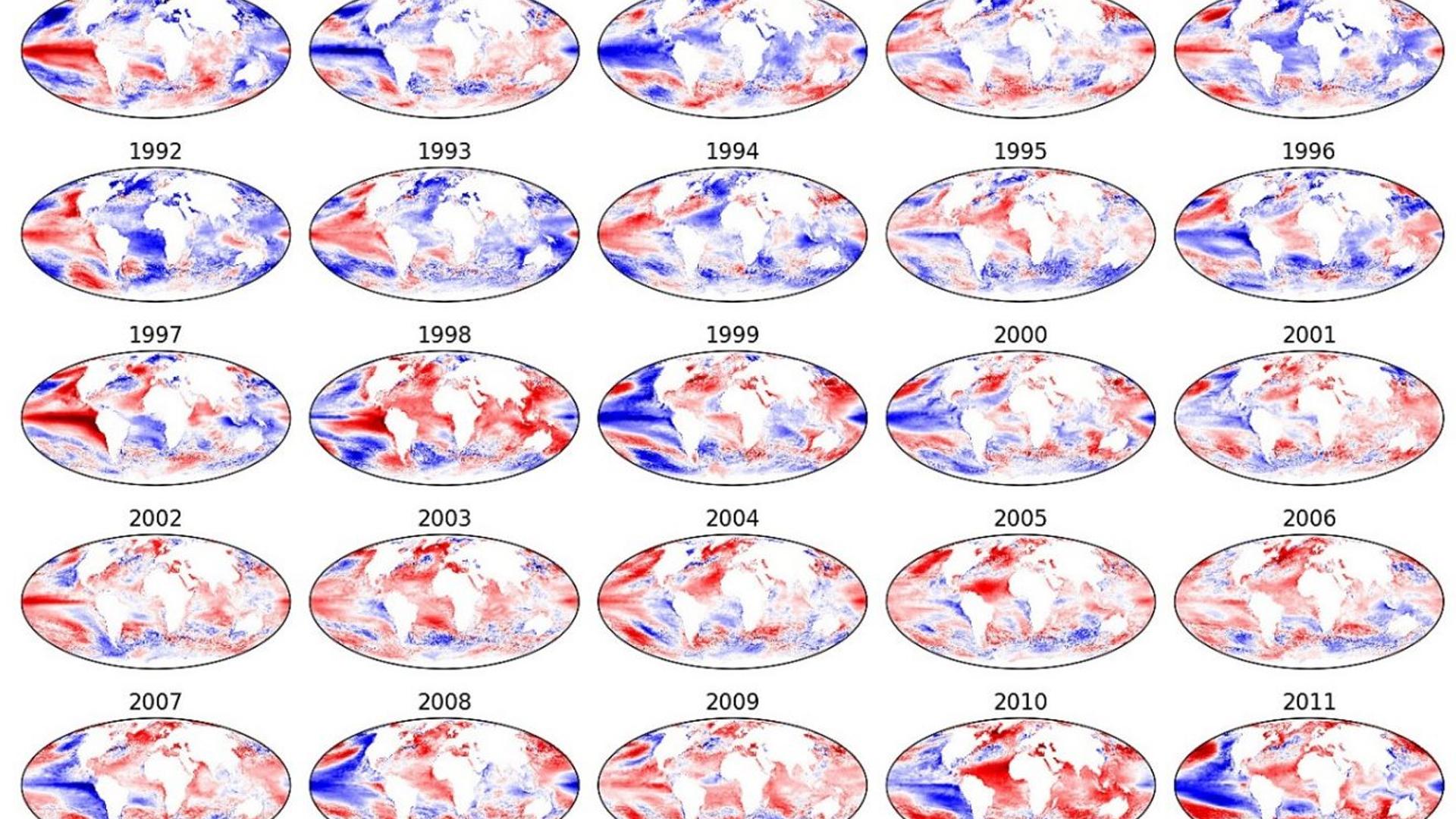
Sea surface temperature – climate data record generation with SLSTR
Sea Surface Temperature data set from 1982 to 2016 now available.

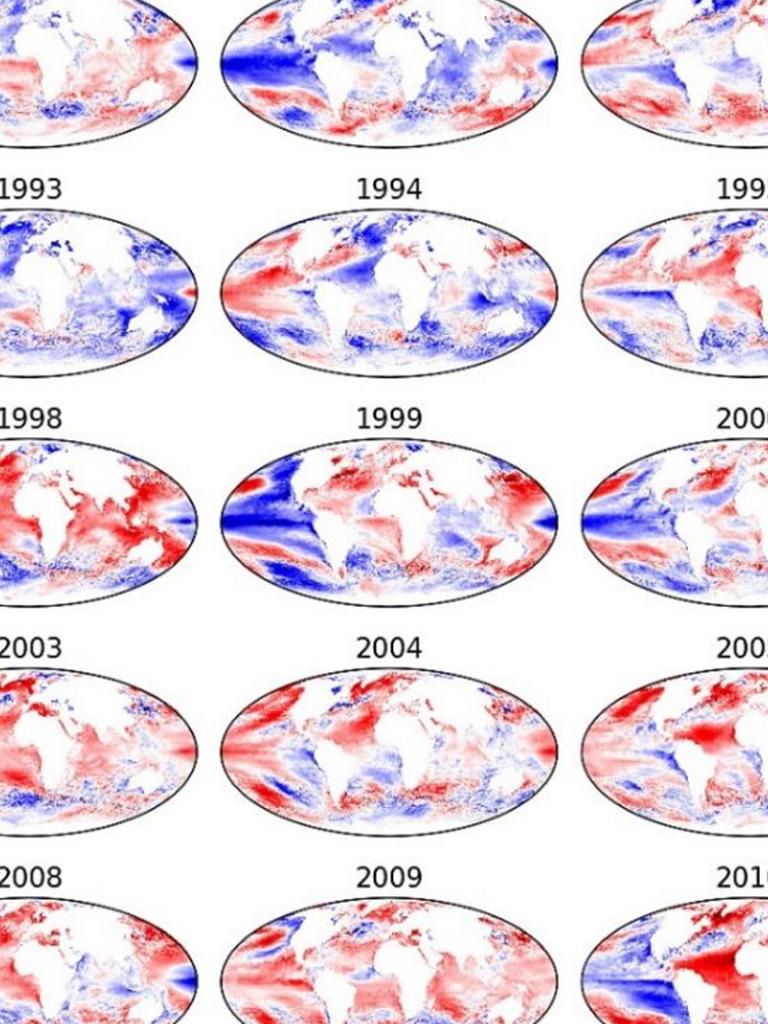
Long-term sea surface temperature (SST) data sets are essential for monitoring and understanding climate variability and climate change.
15 January 2021
28 April 2020
Historically monitored in situ from ships, today, these vital measurements continue to be provided in situ from moored and drifting buoys or profiling floats such as Argo. In addition to in situ measurements, there are sensors watching over the oceans from space, which provide a more global picture of what is happening to our oceans.

A new long-term record of SST was recently generated by the ESA Climate Change Initiative SST project team, who used a constellation of satellite sensors – 14 in total – to create a consistent SST record of 35 years in duration.

The figure above shows annual mean SST anomaly maps for the period 1982 - 2016. The anomalies are the annual mean SST minus the 1982 - 2010 mean SST. The remotely sensed SST have been spatio-temporally completed (infilled) using optimal interpolation, before averaging from daily fields to the annual maps shown above (reproduced by permission under CC BY 4.0 from here). Clearly seen in the figure are large positive SST anomalies in the Equatorial Pacific associated with El Niño events in 1983, 1987, 1997 and 2015.
A key feature of this new data record is that from 1991 onwards, it is independent of in situ measurements as it exploits the unique features of the Along-Track Scanning Radiometer (ATSR) series of sensors as its reference.
The role of the ATSRs as a reference sensor is now taken forward by the Sea and Land Surface Temperature Radiometer (SLSTR) series of instruments, which are flying on-board the Copernicus Sentinel-3 series and operated by EUMETSAT on behalf of the EU.
Sentinel-3 is a dedicated mission delivering a number of important high-quality ocean measurements. It currently provides daily global coverage with two satellites, Sentinel-3A and -3B, with real-time products delivered in less than three hours, supporting operational ocean forecasting through the Copernicus Marine Environment Monitoring Service (CMEMS).
SLSTR measures the intensity of radiant energy emitted from the Earth’s surface in nine spectral bands, including visible and infrared channels, from which SST is produced.
SLSTR’s unique features that allow it to be a reference sensor include two views of each location on the Earth’s surface, and two on-board infrared calibration targets.
The first SLSTR was launched on 16th February 2016 and its data are already contributing to extending the SST climate data record through the Copernicus Climate Change Service (C3S) ensuring independence from in situ is maintained into the future.
